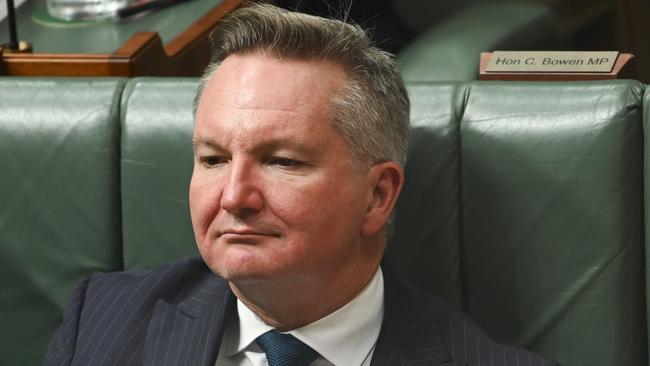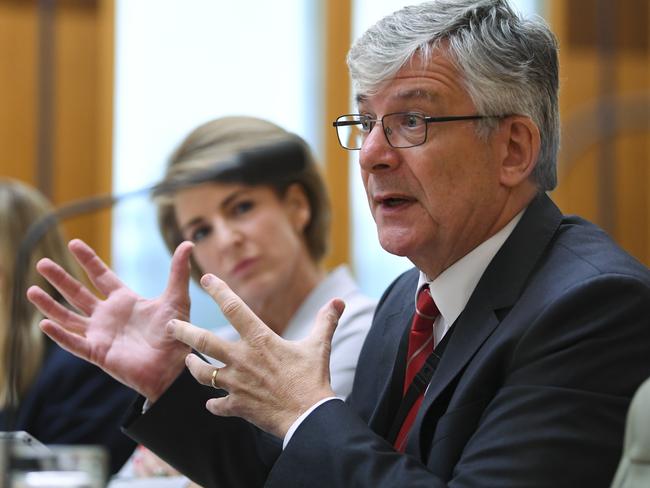Is nuclear energy more expensive than renewables? Here’s what the experts say
The energy modelling Chris Bowen has used to justify the push for renewables is under fresh scrutiny after claims it failed to include the cost of expensive offshore wind farms and grossly underestimating the efficiency of nuclear power plants.
NSW
Don't miss out on the headlines from NSW. Followed categories will be added to My News.
The energy modelling Chris Bowen has used to justify the push for renewables is under fresh scrutiny after claims it failed to include the cost of expensive offshore wind farms and grossly underestimating the efficiency of nuclear power plants.
In a scathing critique of the agency, which was forced to revise its GenCost report after dozens of submissions calling for a review, energy expert Aidan Morrison said the CSIRO based their renewables modelling on a mix of onshore wind and grid scale solar.
This is despite the Albanese government pushing for a number of offshore wind projects including on the south coast of NSW, off Gippsland in Victoria and in Bunbury in Western Australia.
The project in the Illawarra comes with an estimated capital expenditure of $10bn.
“CSIRO is producing a best-case scenario that does not correspond with what we are actually building,” he said.
“They are focusing on a mix of onshore wind and gridscale solar, there are some of both of those things being built but they are not factoring in the offshore wind.”

Mr Morrison said the CSIRO had undermined the benefits of nuclear power to Australia by basing the modelling on flawed assumptions.
“Their costing on nuclear power doesn’t include that nuclear power stations can last for 60 to 80 years or longer,” he said.
“They only assume a lifetime of 30 years, which is the same as solar.”
He added that the report also based some of its modelling on if the nuclear power plants were running only half the time — but international examples like those in the US operate at 90 per cent plus capacity.

“The costs on nuclear energy do stack up,” he said. “Renewable energy is easy to start with a little bit of investment but it doesn’t scale well whereas nuclear energy is quite hard to get started with high overheads and high capital costs but once you overcome that, it scales beautifully.”
The scathing critique comes just days after a bruising day for the scientific body in parliament where South Australian Senator David Fawcett also criticised them over assumptions about nuclear energy.
“The GenCost report is largely a modelling activity as opposed to science,” he said.
“A parliamentary committee did highlight that in this particular domain the CSIRO did not have expertise and they have previously gone on to deliver, figures proved on the public report, as not being robust.”
Mr Fawcett said Australians need to know more about the report that Energy Minister Chris Bowen cites as the “be all and end all” on Australia’s energy future.
“There are a range of assumptions in GenCost that they identify themselves are not representative of the reality. ”Former Australian Nuclear Science Technology Organisation (ANSTO) boss and nuclear expert Dr Adi Paterson said France used its nuclear plants at 95 per cent capacity.
“(CSIRO) cost the nuclear plant at 60 per cent availability whereas in the French system, the average availability is 95 per cent across the fleet,’ he said.

Dr Paterson said the report, which is key to the government’s energy strategy, looks at the generation cost but not the “full cost” of the energy to a consumer.
“The gen (generation) cost is about 25 to 30 per cent of the total cost, the cost (of energy) to the home or to the hospital,” he said.
“It doesn’t say anything about what you and I pay in the bill.”
Dr Paterson said if the government was too concerned about nuclear energy being too slow and too expensive — they must remove all state and federal bans on nuclear investment.
A spokesman for the CSIRO said the capital costs for offshore wind are included in the GenCost report but offshore wind was not included in other calculations because it did not exist in 2023.
“Offshore wind was not included in these calculations as there was none in 2023, and AEMO has not projected offshore wind for 2030,” they said.
They said they only factored the life of a nuclear power plant at 30 years because “it is standard practice that the financing period for an asset is less than its full operational life, similar to a car or house loan.”
“For power stations, warranties expire and refurbishment costs increase around the 30-year mark, hence why GenCost uses a 30-year lifespan for financial planning,” they said.
Do you have a story for The Daily Telegraph? Message 0481 056 618 or email tips@dailytelegraph.com.au





